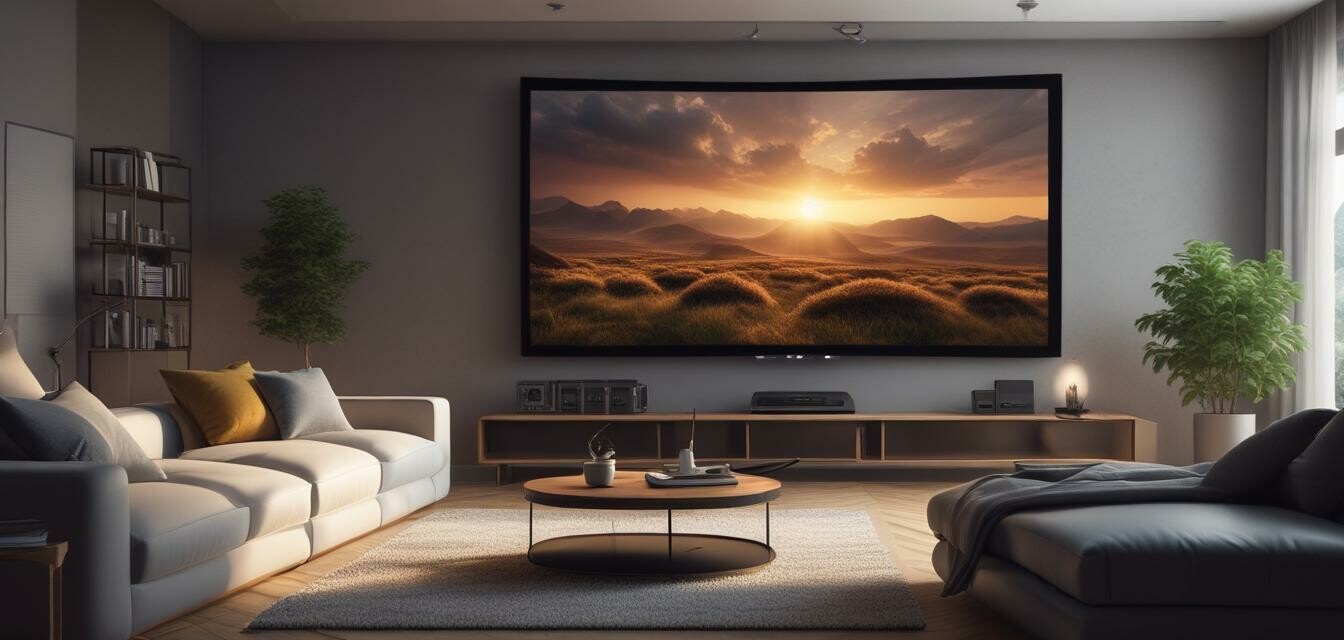
How to Choose the Right Home Entertainment Projector
Key Takeaways
- Identify the appropriate projector type for your space.
- Consider room size, lighting, and screen size.
- Evaluate features such as resolution, brightness, and connectivity options.
- Choose a projector that fits within your budget and meets your needs.
Choosing the right home entertainment projector can turn your movie nights into an immersive experience. With a plethora of options on the market, it’s essential to understand the factors that can impact your decision. This guide will help you navigate through the different types of projectors and their specifications to find the perfect fit for your home.
Understanding Projector Types
Before making a purchase, let's explore the main types of projectors available:
| Type | Description | Best For |
|---|---|---|
| Home Theater Projectors | Designed for cinematic experiences with high resolution and brightness. | Ideal for dedicated home theater rooms. |
| Portable Mini Projectors | Compact and lightweight, allowing for easy transport. | Great for camping, small gatherings, and outdoor movies. |
| Business Projectors | Designed for presentations with a focus on clarity and brightness. | Perfect for conferences and lecture settings. |
| Short Throw Projectors | Can project large images from a short distance. | Excellent for smaller rooms with limited space. |
Factors to Consider When Buying a Projector
When selecting a projector, keep these essential factors in mind:
- Room Size: Measure the space where the projector will be used. Larger rooms may require a more powerful projector.
- Resolution: Choose between Standard Definition (SD), High Definition (HD), or Ultra High Definition (UHD). For clearer and sharper images, opt for HD or UHD.
- Brightness: Measured in lumens, brighter projectors perform well in well-lit rooms. For dark rooms, lower lumens may suffice.
- Connectivity: Ensure the projector has the necessary ports (HDMI, USB, etc.) for your devices.
- Throw Distance: Consider how far the projector will be from the screen; this affects the image size.
Recommended Projectors for Home Entertainment
Here are some highly recommended projectors that provide excellent home entertainment experiences:
TOPTRO TR27 Mini Projector
The TOPTRO TR27 offers native 1080P and 4K support, making it perfect for home cinema, gaming, and education.
Learn MoreWhere to Use Your Projector
Knowing where you'll use your projector is key to making the right choice:
- Living Rooms: Ensure the projector fits your aesthetic and brightness needs.
- Basements: Ideal for dark environments, allowing for a more theater-like experience.
- Backyards: Look for portable options that can withstand outdoor conditions.
- Office Spaces: Business projectors are great for presentations.
Setting Up Your Projector
Once you have chosen a projector, setting it up correctly can enhance your viewing experience:
- Find an appropriate screen or wall for projection.
- Set the projector at the required throw distance.
- Connect your devices using the appropriate cables.
- Adjust the focus and alignment settings for optimal image clarity.
Maximizing Your Projector's Potential
To get the best experience out of your projector, consider the following tips:
Tips for Beginners
- Use a higher quality screen for clearer images.
- Regularly clean the lens to maintain image quality.
- Calibrate the projector’s settings to fit your viewing environment.
- Consider sound options, such as external speakers, for a complete experience.
Common Mistakes to Avoid
Avoid these pitfalls when purchasing and setting up your projector:
- Ignoring connectivity types—choose a projector that supports your devices.
- Overlooking the importance of brightness for your specific room type.
- Not testing the projector before purchasing to see how it fits your needs.
Pros
- Transforms regular movie nights into cinematic experiences.
- Flexible in use—great for different environments and purposes.
- Variety of choices to fit individual needs and preferences.
Cons
- Higher upfront costs compared to traditional TVs.
- Requires a bit more setup compared to TV.
- Image quality can be affected by ambient light.
Conclusion
Choosing the right home entertainment projector involves understanding your space, needs, and desired viewing experience. With this guide, you are equipped to make an informed decision and elevate your home entertainment. For more information on how to optimize your electronic devices, feel free to explore our How-to Guides section.

